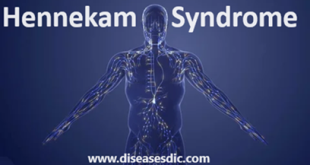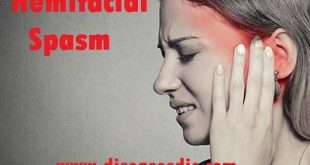Definition
Hyperkeratosis is when the outer layer of the skin is thickened. The outer layer of the skin will contain keratin, which is a protective protein. It is a form of keratosis, which is a skin disorder caused by overproduction of keratin. It occurs most often on skin that has been irritated, has to pressure on it, or has rubbed against something. Less frequently, it will occur on skin that has not been irritated. This often occurs due to heredity if no irritation is seen. Hyperkeratosis often occurs on large portions of the skin.
Hyperkeratosis in foot
Types of hyperkeratosis
There are many types of hyperkeratosis. They include:
Corns and calluses: Corns and calluses develop in areas of skin exposed to repeated friction or pressure. In response, thick layers of dead skin cells pile up and harden. Corns usually develop on irritated toes. Calluses form on the soles of the feet and the palms of the hands. For many people, corns and calluses are simply a cosmetic nuisance. But for others, they are a painful and troublesome medical problem.
Warts: Warts are small bumps on the skin that are caused by human papillomavirus (HPV) infection. Plantar warts grow on the soles of the feet. HPV usually is spread by direct contact. It is typically spread by touching or shaking hands with someone who already has a wart. It may also be spread by coming in contact with a contaminated surface. For example, by walking barefoot on a gym floor or a pool deck or by wearing someone else’s shoes.
Chronic eczema: Eczema is an inflammation of the skin. It can be triggered by allergies, irritating chemicals, and other factors. Eczema is also called dermatitis. Eczema causes itching, redness, and tiny blisters. When the inflammation is difficult to control, chronic eczema can lead to:
- Hyperkeratosis
- Dry skin
- Scaling
- Changes in skin color
- Localized hair loss
Chronic eczema
Lichen planus: This condition may appear as a lacy white patch on the inside of the mouth. Or it may be an itchy, violet, scaly patch elsewhere on the skin. Lichen planus may be related to an abnormal reaction of the immune system.
Lichen planus
Actinic keratosis: These are flat, red, rough, sandpaper-like spots or patches of skin. They can be as tiny as a few millimeters. They are caused by excessive exposure to the ultraviolet radiation of sunlight. They occur on sun-exposed areas of skin. And they have the potential to develop into skin cancer.
Actinic keratosis
Seborrheic keratosis: These are small, noncancerous skin growths. They can be tan, brown or black. They appear on the face, trunk, arms or legs. Seborrheic hyperkeratoses are very common. Their cause is a mystery.
Seborrheic keratosis
Inherited conditions: Several inherited conditions cause hyperkeratosis. They cause a widespread, thick, platelike scaling of the skin. Symptoms begin either shortly after birth or during early childhood.
Risk factors
- While you cannot control certain factors that cause hyperkeratosis, such as genetics, there are other things you can avoid to prevent your skin from suffering from this form of dermatitis.
- Experts have singled out “the use of latex gloves, chemical exposure, and frequent hand washing” as some of the things that can lead to hyperkeratosis. This means that “health care professionals, machinists, housekeepers, and beauticians are examples of individuals who are at a higher risk for developing symptoms.”
- Other factors that can lead to hand dermatitis include a history of childhood eczema.
Causes of Hyperkeratosis
In General, a keratosis is a group of diverse non-inflammatory skin disease characterized by the disturbance of the process of novoobrazovaniya (excessive development of the stratum corneum or delay normal exfoliation). Keratoses are quite common, but their classification was developed fuzzy, due to the uncertainty of the causes and pathogenesis of many of them.
- Hyperkeratosis of the skin can occur in people who do not perform regular treatments, the skin, such as peeling and cosmetic moisturizing. As a result of dehydration dry and dead skin cells accumulate and create an unsightly Horny layer on the surface.
- Our skin is constantly exposed to adverse external factors, such as water and detergents, UF radiation (solar hyperkeratosis). As a result of the impaired lipid layer of the dermis and the moisture evaporates from the skin.
- In connection with the violation of metabolic processes in the skin cells begin to die very quickly and the Horny layer of the skin becomes much thicker.
- Often, hyperkeratosis may develop independently, without any apparent cause. In these cases, the symptom is noticeable immediately after birth and is a hereditary disorder.
- Constant irritation, wearing the wrong shoes and apparel is also cause thickening of the skin.
- HPV or the human papillomavirus contributes to the appearance of hyperkeratosis. The cause of hyperkeratosis may become another infection; an example is frambesia hyperkeratosis, caused by the spirochete.
- It is also believed that the symptoms of thickening and dryness of the skin can be caused by vitamin a deficiency.
- Lack of hormone estrogen in women during menopause contributes to the appearance of hyperkeratosis.
- Aging, hyperkeratosis is associated with age-related skin changes.
Symptoms
Some symptoms of the more common causes of hyperkeratosis include:
Calluses: A callus is an area of thickened skin that usually occurs on the feet, but can also grow on the fingers. Unlike a corn, a callus is usually of even thickness.
Corns: A lesion that typically develops on or between the toes. A corn usually has a center lesion of very hard keratin with an outer ring of hard tissue that is slightly softer.
Eczema: This condition causes red, itching skin that may appear in patches or as small bumps
Epidermolytic hyperkeratosis: This condition causes very red skin and severe blistering of the skin at birth. As the baby ages, they will develop areas of thickened skin (hyperkeratosis), particularly over their joints.
Leukoplakia: This condition causes thick, white patches to build up inside the mouth.
Plaque psoriasis: This condition can cause an excess buildup of skin cells that are often silvery and scaled.
With the exceptions of corns and calluses, most forms of hyperkeratosis are not painful.
Complications of Hyperkeratosis
- Corns and callus that are not treated will become painful. They will not come right on their own unless the pressure that caused them is taken away. If it is not the skin will continue to thicken and become more painful.
- After a while, the body will start treating it as a foreign body and ulcer (abscess) can develop.
- This can get infected – the infection can spread. Infection of corns on the toe is more common than a callus.
- This can be a serious complication for those with poor circulation, peripheral neuropathy and the need for diabetes foot care.
Diagnosis
- The diagnosis of hyperkeratosis typically includes a consultation about the medical and family history of the individual, in addition to an examination of the skin.
- It is important to know if there is a family history of certain skin conditions, which may increase the likelihood of an individual being affected by hereditary conditions. Other factors that may be relevant include exposure to sunlight, use of smokeless tobacco, eating habits and dentures.
- The skin examination will look for particular characteristics that are definitive of the forms of hyperkeratosis. In some cases, further tests or a skin biopsy may be required. This helps to make an accurate diagnosis and enable the appropriate therapy to be carried out.
Treatment and medications
Treatment of hyperkeratosis depends on its cause, location, type, and severity. If the doctor did not reveal the disease to cope with hyperkeratosis can help the beautician.
- For treatment of severe hyperkeratosis of the skin are often used oral drugs. Regular intake of medicines containing retinoids helps effectively combat dry skin problems. The most common is acitretin. It includes a substance analog of retinoic acid.
- Hyperkeratosis of the skin can also be treated with calcipotriol. He is an active form of vitamin D. This medication is applied directly to the affected skin. After about two weeks you can see the first effects of the treatment.
- In less extensive and less severe cases we recommend the use of creams and ointments that are rich in fats. This treatment will improve the lipid composition of the skin and retain moisture.
- You should enrich your diet with fruits and vegetables such as carrots, spinach, cauliflower, plums, peaches or strawberries, lemon, as they contain large quantities of vitamins A and C.
- Improve the condition of skin can be achieved with a rough exfoliation using massage gloves for the shower. It’s good to combine this procedure with a sauna or bath.
Topical agents used in the treatment of hyperkeratosis may include:
- Salicylic acid to break up the keratin, causing the thick skin to soften and be shed, thus reducing the thickness of the skin.
- Urea-based agents to increase the content of water in the skin and soften the area. This can help to break up the keratin, although to a lesser extent than salicylic acid.
- Alpha hydroxy acid to exfoliate the skin and remove the hardened layers, uncovering softer layers underneath, which accept moisture more readily.
- Tretinoin to stimulate the shedding of skin that has become too thick.
- Corticosteroid cream for lichen planus, eczema, and some other forms.
Prevention of Hyperkeratosis
Some forms of hyperkeratosis are very easy to prevent:
Corns and calluses: Wear comfortable shoes.
Plantar warts: Avoid going barefoot in gyms, locker rooms or pool areas.
Chronic eczema: Avoid potential triggers to help to limit or prevent eczema symptoms. For example, avoid:
- Extreme temperatures
- Dry air
- Harsh soaps
- Bubble baths
- Irritating chemicals
Also, try using blankets and clothing made of cotton. Fabrics such as wool, silk, and rough synthetics can be more irritating. Avoiding or removing triggers for your allergies also may help.
Get advice and treatment for mild eczema to help prevent it from becoming a long-lasting condition (chronic eczema).
Actinic keratosis: Limit your sun exposure to early morning or late afternoon hours. Wear protective clothing and a hat when you go outdoors. Apply sunscreen to exposed areas with a sun protection factor (SPF) of a least 30.
 Diseases Treatments Dictionary This is complete solution to read all diseases treatments Which covers Prevention, Causes, Symptoms, Medical Terms, Drugs, Prescription, Natural Remedies with cures and Treatments. Most of the common diseases were listed in names, split with categories.
Diseases Treatments Dictionary This is complete solution to read all diseases treatments Which covers Prevention, Causes, Symptoms, Medical Terms, Drugs, Prescription, Natural Remedies with cures and Treatments. Most of the common diseases were listed in names, split with categories.








very helpful for practising doctor.
hallo what can be a medicine that can remove corns and calluses?? please help me
Most corns and calluses gradually disappear when the friction or pressure stops, although your doctor may shave the top of a callus to reduce the thickness. Properly positioned moleskin pads can help relieve pressure on a corn. Most foot doctors discourage the use of over-the-counter salicylic-acid corn remedies. When applied improperly, these corn “plasters” can create a chemical skin burn in healthy tissue around the corn and cause infections and ulcers (which is a hole through the skin) in patients with diabetes, poor circulation, or numbness in their feet.
what is the cure for genital wart
certain medicines to treat genital wart are
Imiquimod (Aldara, Zyclara)
Podophyllin and podofilox (Condylox)
Trichloroacetic acid (TCA)
Sinecatechins (Veregen)
what can i use to treat the warts that are in my skin i used to cut them with nail cutter but they grow again please help
Please consult a dermatologist. Who may use laser treatment to remove it.
I have large patches of bumps on my skin which joins.it also develop scab and sometimes look like burn
It might be the sign of Hyperkeratosis. We recommend you to consider a dermatologist for appropriate diagnosis of your issues.
The bumps generally don’t hurt or itch. Keratosis pilaris is often considered a variant of normal skin